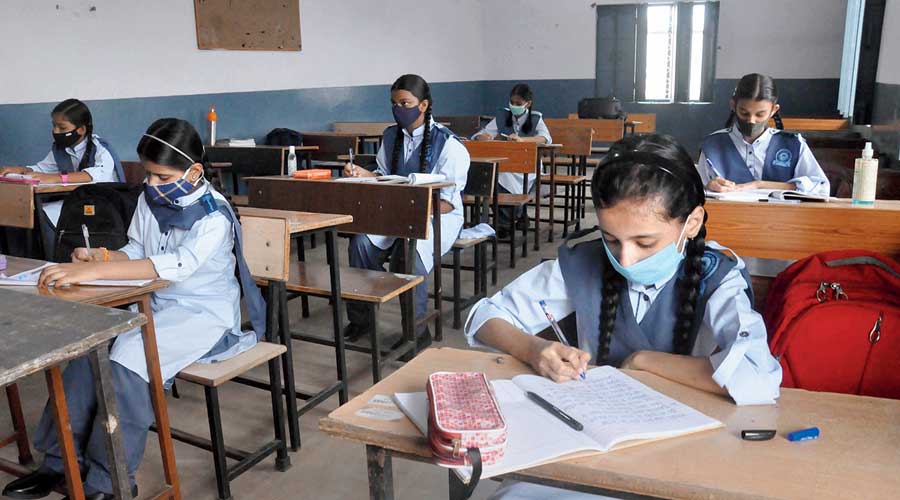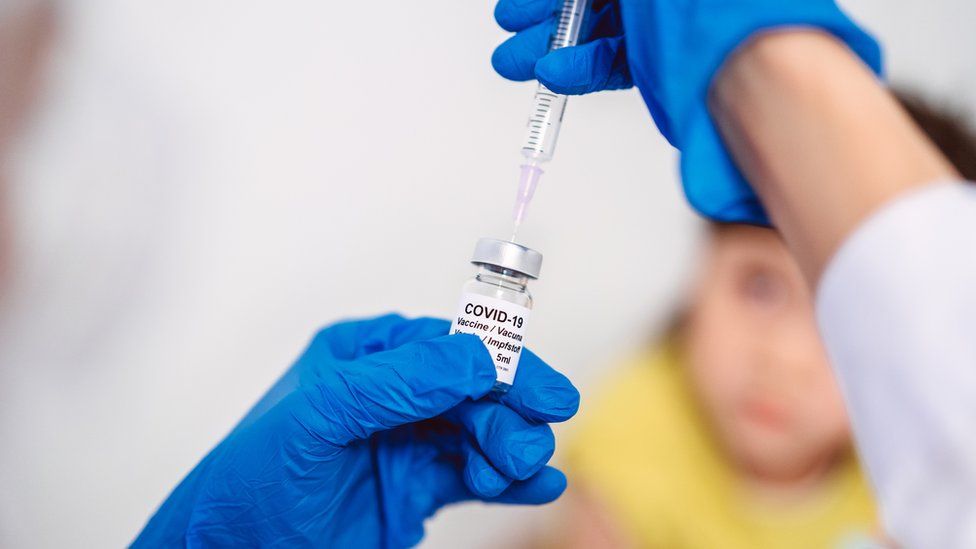Several states have reopened schools, some only for the higher classes, and many others like Delhi are poised to do so from September.
Reports, however, say that attendance has so far been poor in several states that have resumed physical classes after nearly 18 months of closure, with many parents reluctant to send their children to school because of the pandemic situation.
The Delhi Disaster Management Authority (DDMA) on Monday issued guidelines allowing the reopening of schools for Classes IX, X, XI and XII in the capital from September 1. But it restricted the attendance in classrooms to 50 per cent and said a formal consent from the parents was a must.
Authorities at a private Delhi school suggested that attendance was not expected to go over 50 per cent anyway, given the parental reluctance seen elsewhere, but if required they might hold classes in two shifts.
Members of two parents’ groups of 40-odd members each whose children study in two different private schools in Delhi told The Telegraph their groups had collectively decided not to send their children to school for now, at least for theory classes.
The parents, who declined to be named, said their children would continue with the online classes, which the schools will not be stopping even after resuming in-person classes.
Bihar reopened schools for students of all classes a fortnight ago while Uttar Pradesh and Uttarakhand have done so for Class VI upwards. Odisha and Haryana have resumed Classes IX to XII. Uttar Pradesh will restart primary classes from September 1.
Bengal will consider reopening schools only after the Pujas, chief minister Mamata Banerjee has said.
Attendance in Uttar Pradesh has been 20 to 30 per cent on average since the reopening a week ago, reports say, especially with the government continuing to send dry rations to the children’s homes instead of serving cooked midday meals at school.
A parent from Meerut said attendance was around 15 per cent at the budget school where his child was enrolled.
Reports from Bihar suggest that social distancing is not being followed rigorously in the classroom.
Anita Rampal, former dean of the faculty of education at Delhi University, said governments should reopen schools in rural areas and district towns that are experiencing minimal Covid spread instead of waiting for a uniform decision for the entire state.
She said the big challenge for the schoolteachers now was to help the students make up the learning deficit caused by the long school closure.
“Students from the poor and socially disadvantaged sections have been pushed to the margins (during the closure). They need more support, empathy and encouragement to pick up from where they are now, and gain the confidence to learn,” she said.
Rampal said the schools must not hold exams or assessments now or threaten the children with “judgemental labels”.
“The children need to sit and work in groups, while observing Covid protocols, so that they gain motivation and confidence from each other,” Rampal said.
She also stressed the importance of ensuring immediate repairs and maintenance of schools’ infrastructure, which have suffered greatly during the long closure.
Pritish Acharya, professor of social science and humanities at the Regional Institute of Education, Bhubaneswar, argued for the resumption of junior classes, saying most first-generation learners depend entirely on the schools for their foundational learning.
“The primary school children (from poor families) have been the biggest losers because many are unable to handle the electronic device, or their parents are unable to help them, or they lack learning space at home,” he said.
“Nor is the online mode the preferred form of imparting the foundational learning of alphabets, etc.”
Mitra Ranjan, coordinator of the NGO Right to Education Forum, said many children from disadvantaged sections may not even have masks.
“The schools should be supported with the necessary material to ensure students from all sections follow Covid-appropriate behaviour,” Ranjan said.
Additional reporting by Piyush Srivastava from Lucknow












